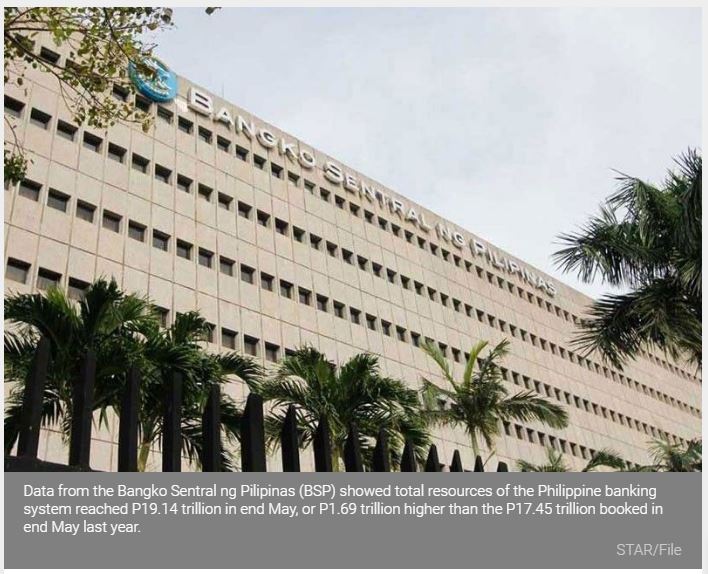Assets of Philippine banks breach P19 trillion in end-May
MANILA, Philippines — Assets of Philippine banks posted a double-digit growth in end May as the COVID-19 pandemic continued to threaten economies and financial systems around the world.
Data from the Bangko Sentral ng Pilipinas (BSP) showed total resources of the Philippine banking system reached P19.14 trillion in end May, or P1.69 trillion higher than the P17.45 trillion booked in end May last year.
The total assets of big banks or universal and commercial banks grew by 11.3 percent to P17.68 trillion from P15.89 trillion, while that of small banks or rural and cooperative banks inched up by 5.8 percent to P291 billion from P275 billion.
On the other hand, the resources of mid-sized banks or thrift banks declined by 9.3 percent to P1.16 trillion from P1.28 trillion.
BSP Governor Benjamin Diokno told officers and members of the Association of Certified Public Accountants in the Philippines (ACPAPP) that authorities are confident the country’s banking system would emerge from the health crisis stronger.
“The COVID-19 pandemic is posing threats to economies and financial systems around the world, including the Philippines,” Diokno said.
Diokno said the central bank has implemented reforms over the years reflecting the lessons learned for the Asian Financial Crisis in 1997.
The BSP chief said the total resources of Philippine banks continued to grow impressively and continued to account for more than 90 percent of the country’s gross domestic product (GDP).
Diokno said the double-digit increase in deposits continued to support the sustained asset growth, indicating unabated confidence of the public in the banking system.
“The Philippine banking system is in a strong financial position going into the crisis,” he added.
Latest data showed the non-performing loan (NPL) ratio of Philippine banks rose for the fifth straight month to hit a five-year high of 2.43 percent in May from 2.31 percent in April amid the sharp rise in past due, as well as restructured loans. This was the highest since the 2.45 percent NPL ratio recorded in May 2015.
“But we do recognize that with the unprecedented health crisis, NPLs could build up over time. And this is why the BSP is closely monitoring the exposures of banks,” Diokno said.
He added the current strength of the banking system is likewise anchored on the presence of sufficient buffers to meet liquidity and capital requirements, including the liquidity coverage ratio (LCR) that measures the ability to manage short-term shocks as well as the net stable funding ratio (NSFR) which indicates availability of stable funding to serve customers in the medium term.
The BSP chief assured Philippine banks remain well-capitalized as their capital adequacy ratios (CAR) are well above the 10 percent required by the central bank and the eight percent threshold set by the Bank for International Settlements.
“Our simulation exercises reinforce the banking system and the banking groups’ capability to weather assumed stressed scenarios with a post-shock CAR of the system and banking groups easily hurdling the 10 percent regulatory minimum,” he said.
According to the BSP, the banking system and banking groups entered the pandemic with high pre-shock CARs enabling them to maintain the minimum CARs even after the stress test exercises.
Source: https://www.philstar.com/business/2020/07/21/2029379/assets-philippine-banks-breach-p19-trillion-end-may


 English
English




